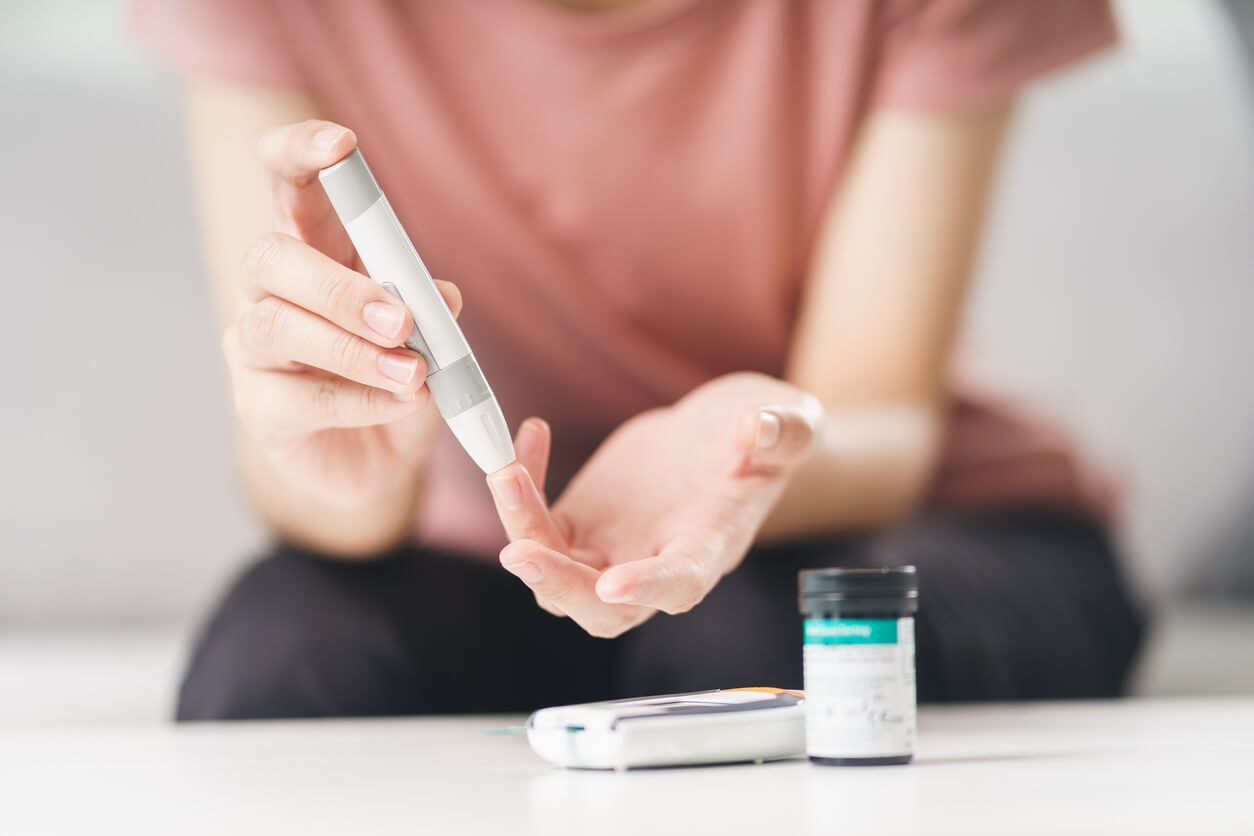How to Reverse Prediabetes with Lifestyle Changes & Medication
Key takeaways
- Prediabetes is common, often silent, and can lead to type 2 diabetes if left untreated
- Healthy lifestyle changes, like eating better, exercising regularly, and losing weight, can help reverse prediabetes
- Working with a healthcare provider is key to creating a personalized prediabetes treatment plan
Nearly 96 million Americans have prediabetes. That’s more than 1 in 3 people. Of these 96 million individuals, more than 76 million don’t even know that they have prediabetes. This is particularly concerning given that untreated prediabetes can lead to type 2 diabetes and other health problems.
The good news is that prediabetes can be reversed. A healthy diet, increased physical activity, and weight loss can all help turn prediabetes around and reduce your risk of developing type 2 diabetes.
What to know about prediabetes
Prediabetes is a medical condition where blood sugar levels are higher than normal but not quite in the diabetic range. It's like a warning sign that you might be at a higher risk of getting type 2 diabetes, which is a chronic disease that comes with potentially severe complications. Prediabetes usually happens when your body's cells don't respond as well to insulin, a hormone that helps control blood sugar. So, your pancreas has to work harder and make more insulin to keep your blood sugar in a healthy range.
One tricky thing about prediabetes is that it often doesn't show any obvious symptoms, which is why it's sometimes called a "silent" condition. You might not even know you have it until you get blood tests, like the fasting blood sugar test or the hemoglobin A1c test, and they show that your blood glucose levels are higher than they should be. However, some people with prediabetes might notice mild symptoms like frequent thirst, urination, and regular fatigue.
Prediabetes risk factors
Several factors can lead to an increased risk of insulin resistance and prediabetes.
These risk factors include:
- Excess body weight: Being overweight or having obesity increases the risk of prediabetes
- Inactive lifestyle: Not getting enough regular physical activity can contribute to insulin resistance and prediabetes
- Unhealthy diet: A diet high in sugar, refined carbohydrates, and saturated fats can elevate blood sugar levels
- Family history: A family history of diabetes increases your likelihood of prediabetes
- Age: Prediabetes risk tends to increase with age, especially after 45 years old
- Ethnicity: Certain ethnic groups, such as African Americans, Hispanics, Native Americans, and Asian Americans, have a higher risk.
- Gestational diabetes: Women who have a history of gestational diabetes during pregnancy are at an increased risk of developing prediabetes
- Polycystic ovary syndrome (PCOS): Women with PCOS are at high risk of prediabetes due to insulin resistance
- High blood pressure: Hypertension is often associated with prediabetes. In addition, individuals with a history of heart disease or cardiovascular disease may be more likely to develop prediabetes
- High cholesterol: Elevated levels of triglycerides and low HDL (good) cholesterol can increase your risk of diabetes
- Sleep disorders: Conditions like sleep apnea can contribute to insulin resistance and prediabetes
- Smoking: Smoking can raise the risk of insulin resistance and worsen prediabetes
How to reverse prediabetes
Reversing prediabetes is possible with the right lifestyle changes and, in some cases, medication. Below are some effective, evidence-based ways to prevent diabetes, maintain a healthy weight, and increase insulin sensitivity.
1) Talk to your health care provider
If you are at high risk of developing diabetes or have been diagnosed with prediabetes, your first step should be to seek medical attention from a licensed health care provider. Don’t try to reverse prediabetes on your own. Trying to overhaul your diet while starting a new exercise regimen can be overwhelming and, if done incorrectly, potentially harmful.
Instead, work with your health care provider to make a meal plan and exercise routine for your needs and abilities. Your provider may refer you to a dietitian or nutritionist for additional healthy eating habits.
Collaboration with a health care provider will also help you monitor your blood sugar levels and adjust your treatment plan.
2) Eat a healthy diet
Incorporating plenty of fruits, vegetables, whole grains, and lean proteins can help stabilize blood sugar levels. These foods are rich in fiber, which slows the absorption of sugars into the bloodstream and helps prevent sharp spikes in blood sugar after meals.
It's also important to control portion sizes and monitor your carbohydrate intake. Processed simple carbohydrates (like white bread and sugary drinks) can significantly spike your blood sugar. Instead, try to choose complex carbs like whole grains, legumes, and vegetables. This can help keep your blood sugar levels steady.
3) Increase your physical activity
Alongside a healthy diet, increased exercise is the other lifestyle adjustment most commonly used to reverse prediabetes and lower the risk of type 2 diabetes.
When you engage in physical activity, your muscles require more energy, prompting your body to take glucose from the bloodstream for fuel. Additionally, regular exercise can increase your body's sensitivity to insulin, making it more effective at regulating blood sugar.
Combining exercises like walking, jogging, swimming, cycling, and strength training can be particularly beneficial for individuals with prediabetes. Aerobic activities increase your heart rate and burn calories, helping with weight management, which is essential because excess body weight can contribute to insulin resistance. On the other hand, strength training can further enhance your body's ability to manage blood sugar.
Consistency is key when it comes to exercise and prediabetes reversal. While we suggest aiming for at least 150 minutes of moderate-intensity aerobic activity per week, spread over several days, getting any exercise in your daily routine is a win! We also suggest including strength training exercises at least two days a week. As with any exercise regimen, it's important to start gradually, slowly increasing the intensity and duration of your workouts to avoid injury.
Beyond lowering blood sugar levels, physical activity offers numerous other health benefits. It can help reduce the risk of cardiovascular disease, improve overall fitness, boost mood, and increase energy levels. Additionally, it can assist with excess weight loss, which is often a crucial component of managing prediabetes effectively.
Before starting any new exercise program, it's advisable to consult with a health care professional, especially if you have any underlying health conditions. They can help you create a safe, tailored exercise plan that suits your needs and fitness level.
4) Quit smoking and cut down on drinking
Smoking increases the risk of insulin resistance, making it harder for your body to regulate blood sugar effectively. When you quit smoking, you not only reduce your risk of developing type 2 diabetes but also improve your cardiovascular health and decrease the overall inflammation in your body. Smoking cessation can lead to immediate health benefits and improve your body's insulin sensitivity over time.
Reducing alcohol intake is equally important when managing prediabetes. Excessive alcohol consumption can disrupt your blood sugar levels, as it can lead to fluctuations in blood sugar, especially when consuming large quantities of alcohol. Alcohol also interfere with the liver's ability to regulate glucose production.
If you choose to drink, do so in moderation, following recommended guidelines for safe alcohol intake. This typically means limiting alcohol to one drink per day for women and up to two drinks per day for men.
5) Stay hydrated
Hydration supports overall health and can indirectly contribute to better blood sugar management. When you're properly hydrated, your body can transport glucose effectively to cells, where it's used for energy. Dehydration, conversely, can impair this process and lead to higher blood sugar levels.
Maintaining proper hydration is also vital for kidney function. The kidneys regulate blood sugar levels by filtering excess glucose from the bloodstream. Dehydration can strain the kidneys, making it more challenging for them to perform this function. Adequate hydration supports kidney health and can contribute to better blood sugar control.
6. Get enough sleep
Getting enough quality sleep is essential for overall health and well-being. Poor sleep patterns, such as insufficient or disrupted sleep, can lead to hormonal imbalances that affect blood sugar regulation.
Lack of sleep can also increase the body's production of stress hormones like cortisol, contributing to insulin resistance. Aim for at least 7-9 hours of sleep per night and check out our guide to common sleep questions for healthier sleep habits.
7. Manage your stress
Chronic stress is another significant factor in prediabetes. Stress triggers the release of stress hormones, which can lead to elevated blood sugar levels. Additionally, when people are stressed, they may engage in unhealthy coping mechanisms like emotional eating or skipping exercise, further exacerbating the problem.
Consider techniques to reduce stress, such as mindfulness, meditation, deep breathing exercises, or relaxing activities. These activities can help reduce stress-related blood sugar spikes and improve insulin sensitivity.
8) Medication
Currently, there are no medications that are FDA-approved to treat prediabetes. However, there are several medications that are often prescribed off-label to manage or reverse prediabetes, such as metformin and GLP-1 medications.
- Metformin (Glucophage): Metformin is a type 2 diabetes medication that helps lower blood sugar levels. A 2023 analysis of 17 studies found that taking metformin also lowers the chance of developing type 2 diabetes, especially in people who are overweight or obese.
- GLP-1 medications: GLP-1 medications can help lower blood sugar levels and support weight loss, both of which are key to preventing prediabetes from progressing to type 2 diabetes. Common GLP-1s for type 2 diabetes include Mounjaro (tirzepatide), Ozempic (semaglutide), and Saxenda (liraglutide). Common GLP-1s for weight loss include Zepbound(tirzepatide), Wegovy (semaglutide), and Victoza (liraglutide).
How Sesame can help
If you are at risk for prediabetes or have been diagnosed with prediabetes, a provider on Sesame can help you develop a treatment plan today.
Simply book an online diabetes consult to speak with a specialist who can recommend lifestyle changes and prescribe medication if appropriate - no long waits, no surprise bills, no insurance needed.









